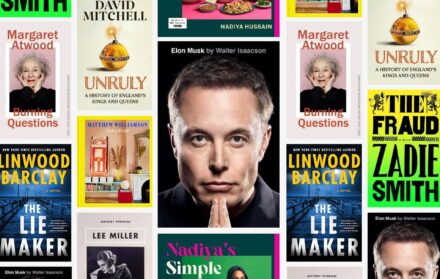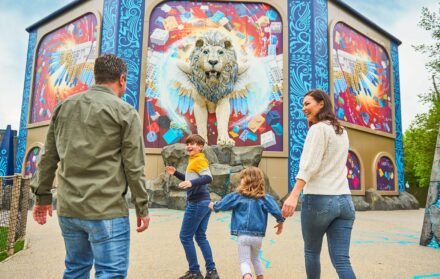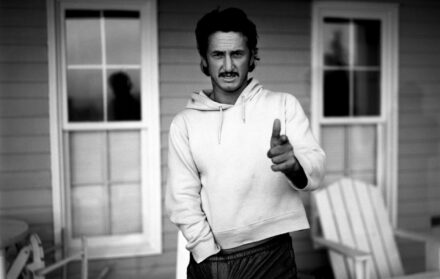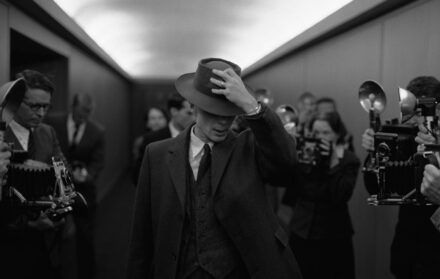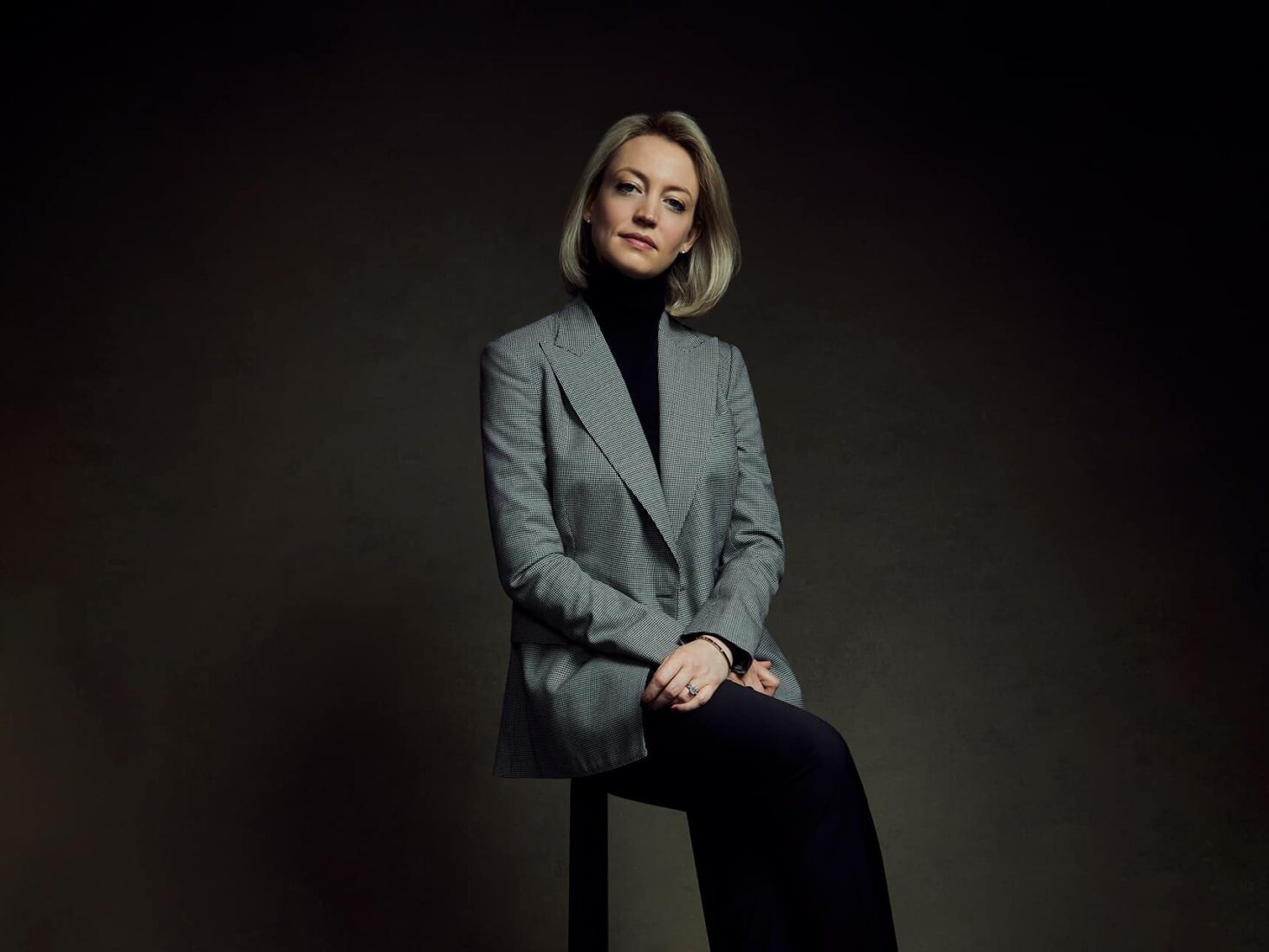
Katharine Arnold: The magic touch
Katharine Arnold, Head of Post-War and Contemporary Art in Europe at Christie’s, talks philanthropy, partnerships and record-breaking prices
In May 2020, in the throes of Britain’s first Covid lockdown, a new Banksy appeared overnight in Southampton General Hospital. Installed covertly and without ceremony, the portrait, Game Changer, offered a poignant tribute to frontline healthcare workers, created by the anonymous artist with the intention of raising up to £3 million for NHS charities. Less than a year later, on the anniversary of the first lockdown, the artwork sold at auction for a record-breaking £16.8 million, far surpassing its estimated value. Katharine Arnold, Head of Post-War and Contemporary Art in Europe at Christie’s, counts the philanthropic sale of the piece as a highlight in her 12-year career at the esteemed auction house.
Of course, that Christie’s was the house chosen to host the auction was, in itself, a triumph that can largely be attributed to Arnold’s magic touch. A keen knowledge of art history – picked up during a Masters degree in Art History at the Courtauld Institute – and astute business acumen – honed at a role in global equity sales at Merrill Lynch – have made her one of the best in the business at garnering record prices. Some of Arnold’s most notable auctions include that of Francis Bacon’s Three Studies of Lucian Freud (1969) for $142 million in 2013, and Tracey Emin’s seminal My Bed in 2014 for £2.54 million – six times more than the £150,000 Charles Saatchi paid for the piece in 2000.
Arnold has what many might consider a dream job. When she’s not busy curating record-breaking philanthropic auctions and pioneering genre-redefining partnerships, she can be found flitting between galleries and private collections in search of acquisitions and the Next Big Thing. “Art is the greatest expression of humanity,” Arnold says. “A means by which we can connect with one another and address issues that resonate internationally. This is what drives me.”
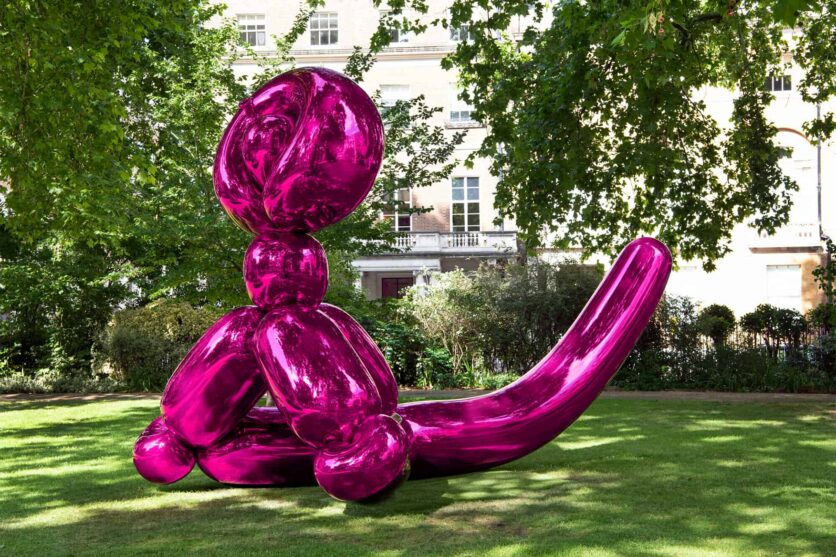
And, while achieving huge sums at an auction house might be nothing new, “what really distinguishes Christie’s is our dedication to philanthropic collaborations,” says Arnold. Aside from the historic Banksy sale, she has spearheaded the philanthropic sales of works including David Hockney’s portrait of Sir David Webster in aid of the Royal Opera House and Jeff Koons’ Balloon Monkey (Magenta) for over £10 million to raise funds for those affected by Russia’s invasion of Ukraine. Most recently, Tracey Emin’s Like a Cloud of Blood sold for £1.3 million during Frieze London 2022, proceeds from which will go towards Emin’s new Margate-based art centre.
Aside from an evident passion for art, Arnold’s career is motivated by a drive for inclusion through collaboration across the art world. “Christie’s collaborates with pioneering cultural figures to ensure that our programme of exhibitions and auctions represent the diversity of the contemporary art world,” she explains. This has materialised in the form of exhibitions such as the October 2021 show Bold Black British. Curated by Nigerian-British art historian and critic Aindrea Emelife, the exhibition paired the work of pioneering members of the British Black Arts Movement of the 1980s with the next generation of Black British artists in a celebration of the vibrancy and verve of Black art and its contribution to the cultural landscape of the UK.
“Art is the greatest expression of humanity”
Katharine Arnold
Another of Arnold’s successful collaborations includes a partnership with art fair 1-54: Contemporary African Art, which has been ongoing for the last three years. Past showcases created with 1-54 have included a series of five NFTs created by Nigerian digital and crypto-artist Osinachi. The display of Osinachi’s digital works at 1-54 saw Christie’s first-ever physical presence at an art fair, with the pieces collectively raising £155,000.
During Frieze Week, Christie’s presented an auction comprising the largest group of contemporary works by artists from Africa and the diaspora in A Place With No Name: Works from the Sina Jina Collection. Featuring 55 artists across 74 works, many of the pieces sold above estimate, raising a total of more than £3 million and saw artists such as El Anatsui, Elias Sime and Lynette Yiadom-Boyake exhibited alongside world-renowned artists including Hockney, Francis Bacon and Yayoi Kusama. “These collaborations are key to Christie’s supporting the wider art ecosystem and using our international platform to showcase a broader selection of artists to our international clients,” explains Arnold.
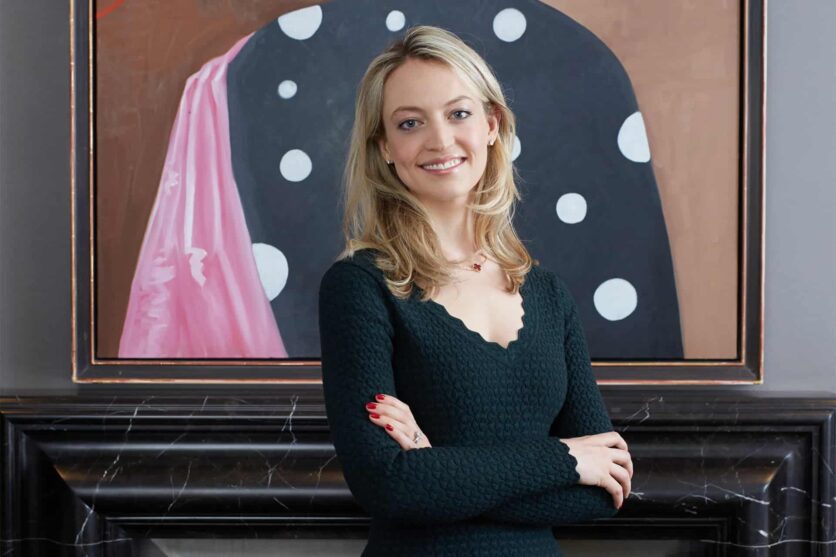
But Arnold’s dedication to bringing Christie’s firmly into the 21st century doesn’t only lie in cultural inclusivity, but in a drive to diversify the auction house’s offering through new media. In 2021, she instigated an exhibition of work in collaboration with English artist Stanley Donwood and Thom Yorke of Radiohead. The King Street exhibition and following auction offered six works dating from 1999-2001 which related closely to the cover and sleeve art of Radiohead’s 2000 album Kid A, and included lyrics, drawings and digital art curated by Donwood and Yorke, breaking away from Christie’s bread and butter of classic contemporary art media and antiquities.
A successful career in the upper echelons of the art world requires a few key attributes (good taste, a keen eye for the market, an encyclopaedic knowledge of art history – all of which Arnold has in droves), but most of all a passion for the work, those who make it, and its impact on wider cultural conversations. Here, Arnold certainly delivers. “Contemporary art continues to be shaped by pioneering artists whose vision defines epochs,” she enthuses. “That this does not stand still, and instead evolves in dialogues that are established across multiple generations of artists, is what I find to be the most inspiring aspect of contemporary art practice.”
Read more: Serpentine CEO Bettina Korek on bringing art to a new generation

